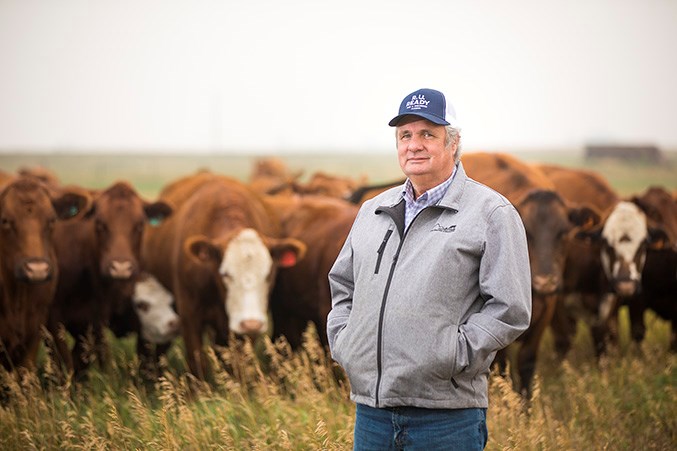Dry conditions are forcing southern Alberta ranchers to make some tough decisions. A hot spring and summer with little moisture has pushed much of the prairies into drought, affecting not only potential harvest yields this fall but also the amount of feed for cattle ranchers this winter. “Hay uses moisture all the time, so there wasn’t much for it to use and certainly the hay crops are short and the grain feed crops are short,” said Mazeppa-area farmer Phil Rowland. To compound the issue, stack yards were depleted last winter because 2017 saw lower yields than usual on hay and grain feed as well, he said. “Even if you have a good hay crop this year you’re going to fill your stack yard up and replace your carryover,” said Rowland. “So feed is going to be short.” He said the bales haven’t all been counted on his farm, but he’ll probably be “pretty close to good enough.” If the numbers come up short though, it will mean selling off some of the herd, he said. It’s a common problem many ranchers are facing, he said. When culling the herd, ranchers will first eliminate “bad cows,” he said – those with undesirable traits or dispositions. “The next thing you’ll do is get rid of your stockers, which are the yearlings you might normally background,” said Rowland. “They’ll end up in a feedlot sooner than normal.” If the feed situation is really dire, ranchers are then forced to sell off cows they would rather keep, he said. There’s a chance it could have a negative impact on the beef market if a lot of ranchers start selling at the same time, he said. “Right now the market is fairly strong and if you’re able to go out and make those decisions right now you might be okay,” said Rowland. “You certainly don’t want to wait when it comes to destocking. You’ve got to have a plan for the market.” Ralph Nelson, who runs cattle south of High River, said the hay situation for his ranch is nowhere near what it should be. Stock is also down on the Nelson ranch – last year’s hay crop produced just over half the normal yield, so it was used over the winter. This year’s crop is even less promising, with half again of the feed in 2017, he said. Luckily, the Nelsons had a back-up plan. “We had some barley seeded for grain, so we cut all that for feed,” said Nelson. “So we’re okay. But if we hadn’t had that, we would have been looking for feed.” He said some ranchers have been on the hunt for feed, making deals with hail-inflicted farmers in the Blackie area to cut damaged crops for their cattle. Others are looking for straw to add to their feed, which will help stretch it out further, he said. Dry weather could also mean some of the grain crops coming off at harvest are used as feed and ranchers can buy the grain, he said. Some may also look elsewhere in the province to see if there are better hay crops, and purchase feed from central or northern Alberta, he said. But it could also mean cutting back on the number of cattle, he said. “At a certain point you just can’t afford to spend $250 per tonne to buy your entire feed source,” said Nelson. For some of the “older guys” who have been thinking about getting out of cattle, a year like this could make them pull the trigger and unload their stock, he said. Most ranchers would have known their feed situation by early July, when hay crops were cut, he said. It gives time to make a decision as to whether they’ll buy feed or thin the herd, he said. Feed is typically needed by late fall to carry cattle through the winter, he said. For the Nelsons, whose cows are currently in the hills on a grazing lease until November, the time for feed is usually December. “We will have some second growth of some hay we cut, so we’ll have a certain amount of grazing depending on how much snow we get right away,” said Nelson. “If we don’t have a huge snow cover right away then we don’t generally have to start feeding until well into December. But everybody’s operation is a little different.”




